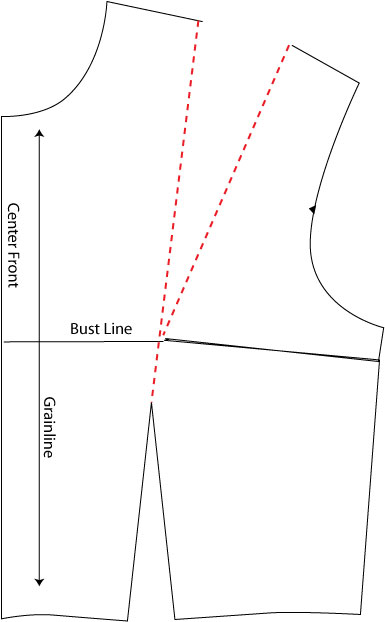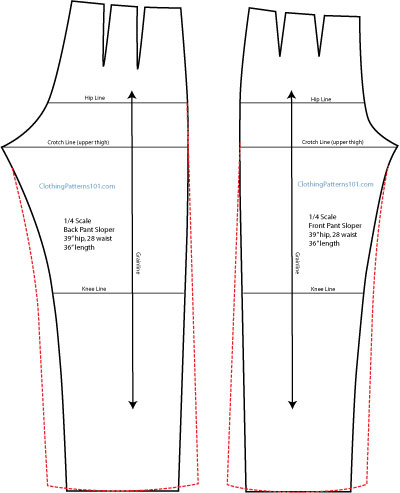- Clothing Patterns 101
- Tips and Techniques Videos
- Flat Pattern vs Draping
What's the Difference between the Flat Pattern Technique and Draping?
Do you know the difference between draping and the flat pattern method of pattern design?
I this month's video, I explain each of these techniques and demonstrate how to add "draped" pleats to the shoulder of a top using each method.

Draping uses fabric pinned to a body form to design the garment. The pinned fabric is then removed from the form and the pieces are traced onto pattern paper and "trued", just as you would do with any pattern.
The Flat Pattern Method requires a pattern block or sloper, which is the most basic, unadorned dress or pant pattern. The block pattern is adjusted for perfect fit, and then any garment you design using that block will also fit - the fit is built into the pattern.
Which method is better?
Actually, it's mostly a matter of personal preference. I like the flat pattern method, and really dislike draping - but that's probably because I've used that method for most of my life. I've just never used draping much, and don't feel as comfortable with it
I DO use draping as a design tool on occasion; it's mostly a way for me to work out design problems, but then use what I've learned from the draped fabric to design my flat pattern.
If you have a body form that closely resembles YOUR body, go ahead and play with draping! DO NOT use your fashion fabric for draping, though - ALWAYS drape in muslin or a plain fabric that closely resembles your fashion fabric in weight and hand feel.
It's never a good idea to just take the pinned fabric from your body form and stitch it together - chances are, the garment won't hang properly or it may not fit well.
And, you need to mark your draped fabric for grainlines, notches, etc. before removing it from the body form and laying it flat on your pattern paper. So a plain color is best.
Play with this new technique - whether you drape an entire garment or just work out how to do a feature such as pleats. You'll learn a lot with practice!
More Tips and Techniques Videos
- Why Do I Need a Dress Block? Can't I just re-design a purchased pattern?
- Why Do I Need Darts? They're so UGLY !!
- Using Your Quarter Scale Patterns
- Turning Your Darts into Styling Details
- Slashing and Spreading your Pattern to Add Fullness
- Customizing your Body Form
- Using Basic Pattern Techniques
- What does it mean to "true" your pattern?
- Don't Make MY Mistakes! Do a Proper Muslin Fitting
- The Difference Between Fit Ease and Style Ease
- Flat Pattern vs. draping
- What Are Style Lines?
- Do You Have Trouble Fitting The Bust?
- Where Do You Find Design Inspiration?
- Even the Greatest Style Falls Flat if it's Out of Proportion
- Do You Speak the "Language of Patterns"?
- The Difference Between Sewing Ease and Style or Fit Ease
- Sewing Gifts for Your Friends - or For You!
- How Collars Work
- Patternmaking Tools to Get You Started
- Style vs Fashion - Do You Know the Difference?
- More on How to Use Quarter Scale Patterns
- More on Pattern Manipulations to Move Darts and Add Fullness
Return to Clothing Patterns 101 Home Page
ClothingPatterns101.com does not sell the personal information of its users to anyone, ever.

